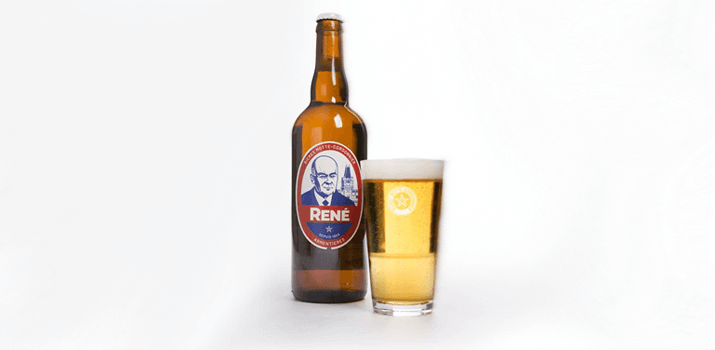
Last time, we looked at our very own, Mark James', homebrewing recipe for a Mosaic Golden Ale. So, you know what? Let's brew it! To make your brew day go smoothly--AND so you can relax, not worry and have a homebrew--let's get prepped. Like a chef in a restaurant, homebrewers would be well served by doing what's called mise en place. Essentially, it means: get your stuff together.
We're going to take a bird's-eye view of what you need to get started and the process you're going to be going through. That way we can get to the end of a successful brew day--and we can tuck those little yeasties in so they can do their magic.
Step One
Prep your yeast starter.
If you're using liquid yeast, it's helpful to prep a yeast starter so that those bad boys are nice and strong when it comes time to pitch. Read this article from the American Homebrewers Association on how to do it.
Step Two
Get your things together.
Here's a handy list of stuff you should have at hand before you get started:
1.) Your grains for the mash (just have the shop crush them if you can. They're experts at it.)
2.) Five gallons (19 liters) of water. Filtered tap water will work just fine.3.) Hot liquor tank
4.) 7.5 gallon (28 liter) brew pot.
5.) Mash/lauter tun
6.) A mash paddle or spoon
7.) A thermometer
8.) Food-grade plastic tubing. Make sure it's heat resistant
9.) 1 gallon (4 liter) pitcher. For sparging
10.) Fine mesh bag. For straining the wort.
11.) Wort chiller.
12.) A fermenter. A food-grade plastic bucket or a carboy.
13.) Air lock
14.) Sanitiser
15.) A hydrometer
16.) A beer and a comfy chair.
Step Three
Sanitise, sanitise, sanitise.
Sorry, you probably thought we'd get to the good stuff. While we agree that sanitising isn't sexy, neither is spoiled beer. Get that StarSan out and clean everything. Every spoon, paddle, and body part (that'll touch the beer) Maybe kick the dog out of the room too.
We've said this before, yes, and we'll say it a million times more: sanitise.
Step Four
Heat the mash water
Next time we'll get in to how much water you need and what temperature you should have it heated to. For now, just know that your first step is heating up some water for the mash. (You can have this going in your hot liquor tank.)
Step Five
Mashing
Now you're actually doing some proper brewing (as opposed to just heating up water in a kettle.) Pour the pre-heated mash water over your crushed grains in the mash tun. Extract those sugars, baby!
Step Six
Sparging
Remember sparging? You've drained the wort from the mash (Step Five) but there's probably a whole lot of yummy yeast food still hanging around. Here's where you, slowly, sprinkle water over the grains to try to get more of the sugary water--wort--into your brew pot.
Step Seven
The boil
Put that brew pot of delicious wort over some sort of heat source--a gas burner, hob, a really hot fire--and bring it to a boil for 60 minutes.
Step Eight
The hops
Hops, glooooorious hops. Once the wort has come to a boil, the clock begins on when to use your hops. Our recipe tells us when we want to put them in. For example: where it says 20 minutes, you put your aroma hops in with 20 minutes left in the boil.
Also, take that spoon and keep that baby beer swirling.
Step Nine
Chill
Take the boiled hoppy wort off the heat and immediately get that temperature down. This can be achieved by submerging the pot in an ice bath or by using a copper wort chiller. Either way, from here on out is where sanitiation is extremely important; you're not killing anything off in a boil anymore!
Step 10
Transfer to your primary fermenter
Carefully now. Transfer your chilled wort to your yeast's new home: the primary fermenter. It's probably looking a bit gunk-y because of the hops and whatever else you may have put in there so strain it through a fine mesh bag (that's been sanitised!)
Don't forget to take your original gravity reading with your hydrometer!
Step 11
Pitching the yeast
Swing batter batter! Whether you're using dry yeast, a smack pack or a yeast starter, the time is now. Pitch that yeast! (Get it in that bucket!)
Make sure the lid is on tight (we won't tell you how we know what an incredible mess it makes if you don't...) and slosh the dickens out of it. You're aerating here--or giving the yeast the oxygen it needs to grow.
Step 12
Add the airlock
Night night, sleep tight. Put an airlock in your fermentation vessel and tuck it away in a stable-temperature (at the appropriate temperature) area. You'll see little air bubbles in your airlock once fermentation starts to take place, in about 12 hours.
Also, if you have a shower in a bathroom that won't be used, it won't hurt to put the whole thing in there. It makes for easy clean up in case something, well, explodes. Again, don't ask us how we know.
Ok! There ya go. An overview of the homebrewing process. Are you ready to get started? We are!
We'll see you next time when we dig a little deeper into some of the specifics of some of these steps. Until then, it's beer time. Cheers!





